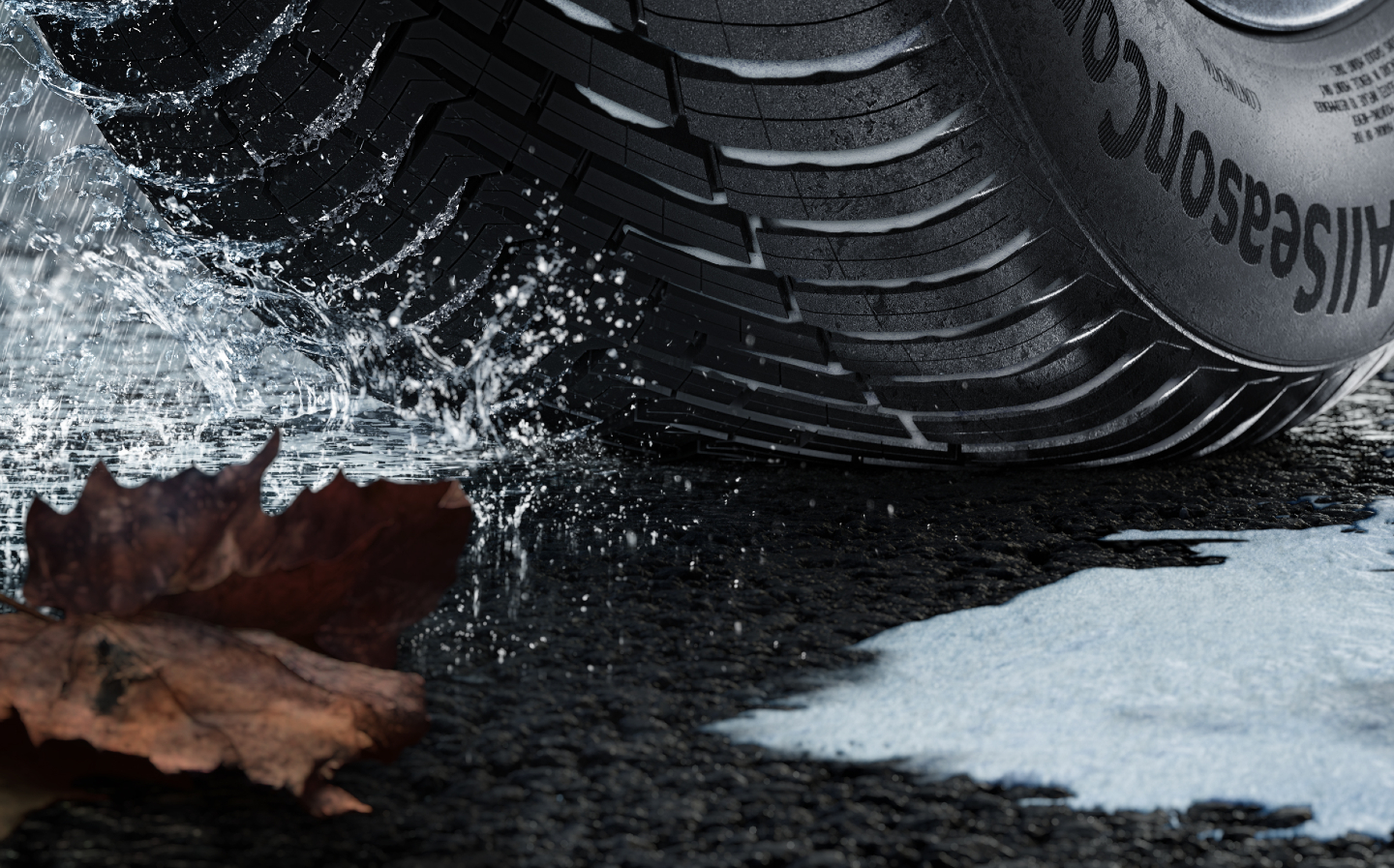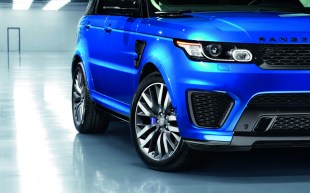All-season tyre test: a better option than summer and winter tyres for year-round safety?
We head to Mercedes-Benz World to try out a set of Continental all-season tyres versus regular rubber on low-grip surfaces
When the weather takes a turn in autumn and winter, the increased inclemency and potential for snowfall makes driving a lot more hazardous. That’s why more drivers turn to winter tyres to ensure the best grip for the conditions.
But there’s a third way: all-season tyres, which are designed to offer a balance of performance throughout the year, in all weather conditions. This potentially means no need to store a second set of tyres and no need to spend time switching them over twice a year.
But how good are all-season tyres, and are they in fact the worst of all worlds … bad in the summer and worse in the winter?
Not according to German manufacturer Continental, which claims its AllSeasonContact tyre offers “impressive grip on snowy and wet winter roads” as well as “good braking performance on dry and wet summer roads”. In other words, no compromises.
To find out whether these claims are true, Driving.co.uk headed to Mercedes-Benz World in Surrey to test the AllSeason against Continental’s EcoContact6 summer tyre. Read on for the results.
What is an all-season tyre, and how does it differ from winter and summer tyres?
Different types of tyres differ in two key areas: tread pattern and compound (chemical composition).
Tread pattern
A quick look at the different types side-by-side shows a clear difference in tread pattern, but understanding why they’re different is not so obvious.
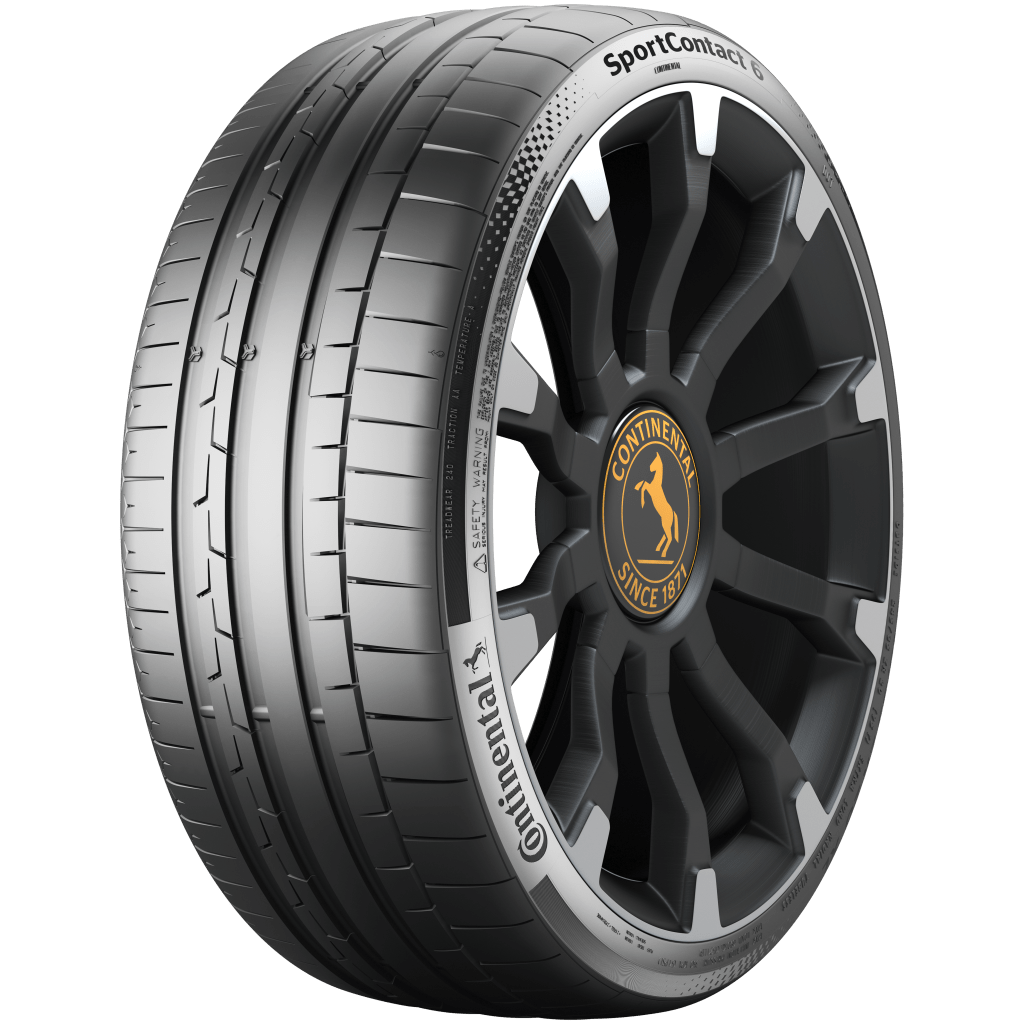
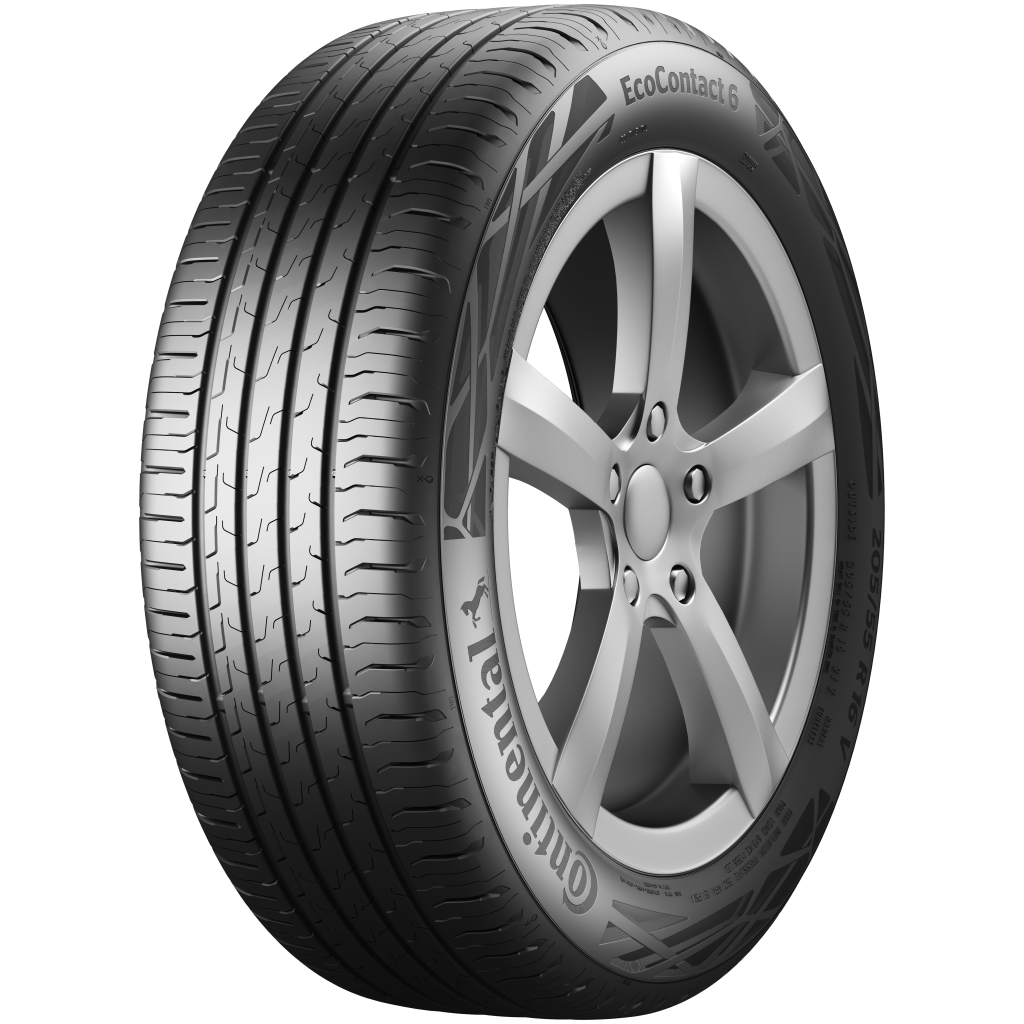
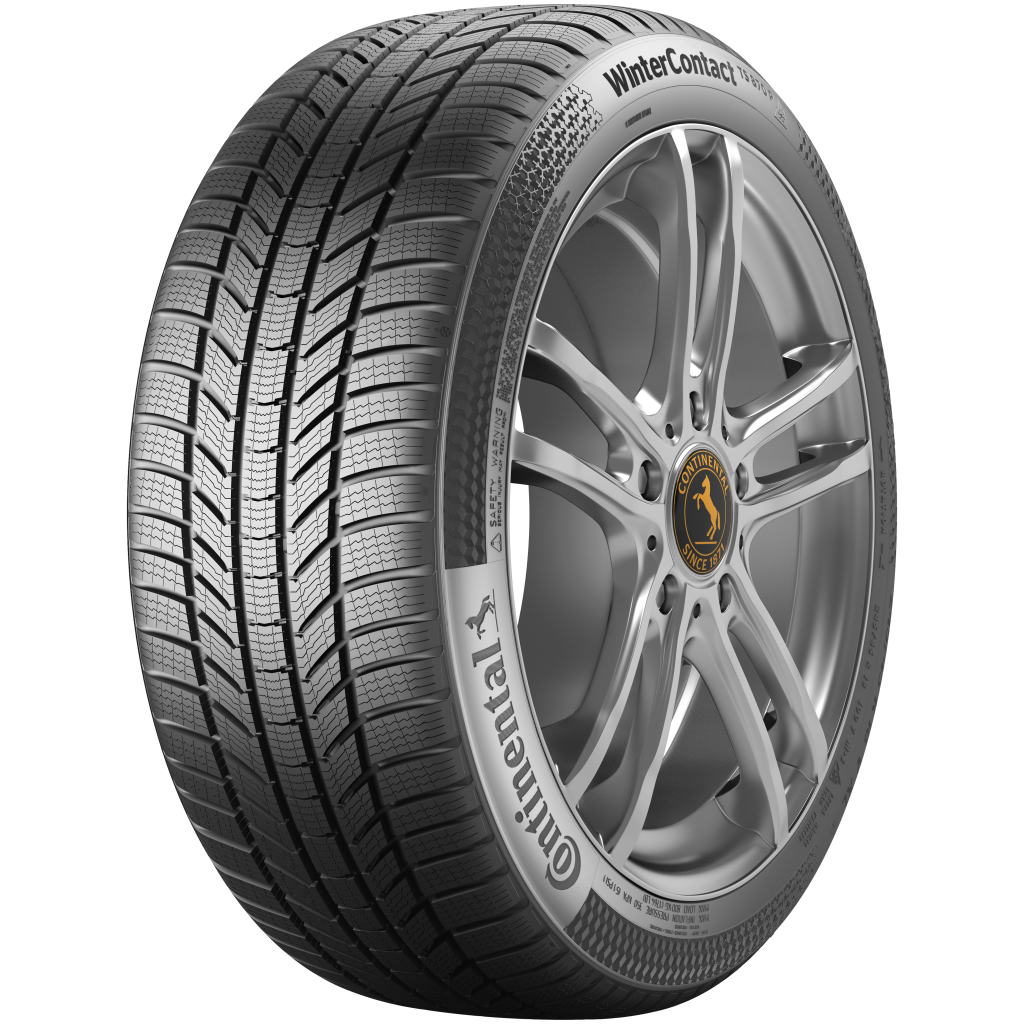
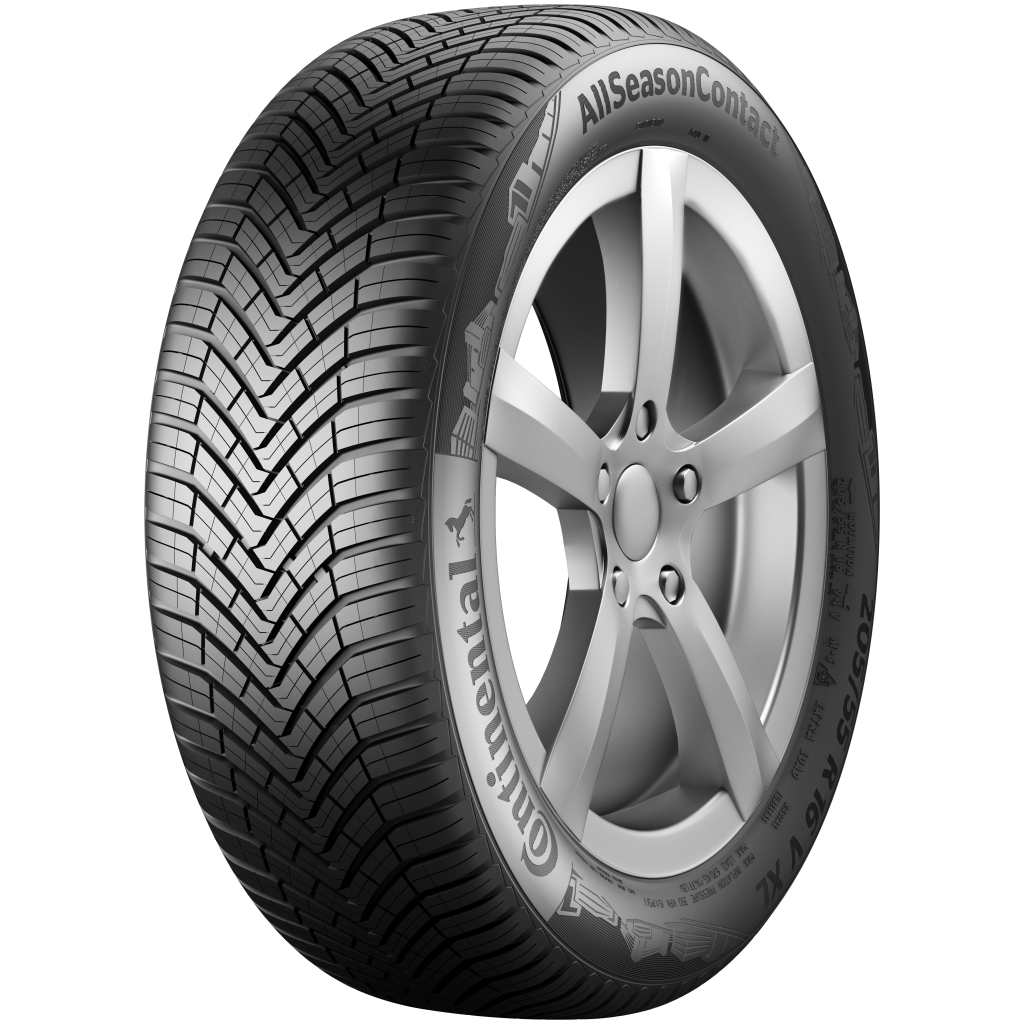
The first thing you notice about winter and all-season tyres is that the tread pattern is directional; the grooves flow from the centre out to the shoulder of the tyre. This is for channelling water and slushy snow, which is pushed out of the sides of the tyres to allow purchase of the road.
Summer tyres don’t have this because they’re designed for higher speeds and in the wet, around 90% of the water displacement happens in front of the tyre, like a bow wave on a boat. At lower speeds this effect is reduced, so winter and all-season tyres use the tread channels to evacuate the fluid away from the centre of the tyre.
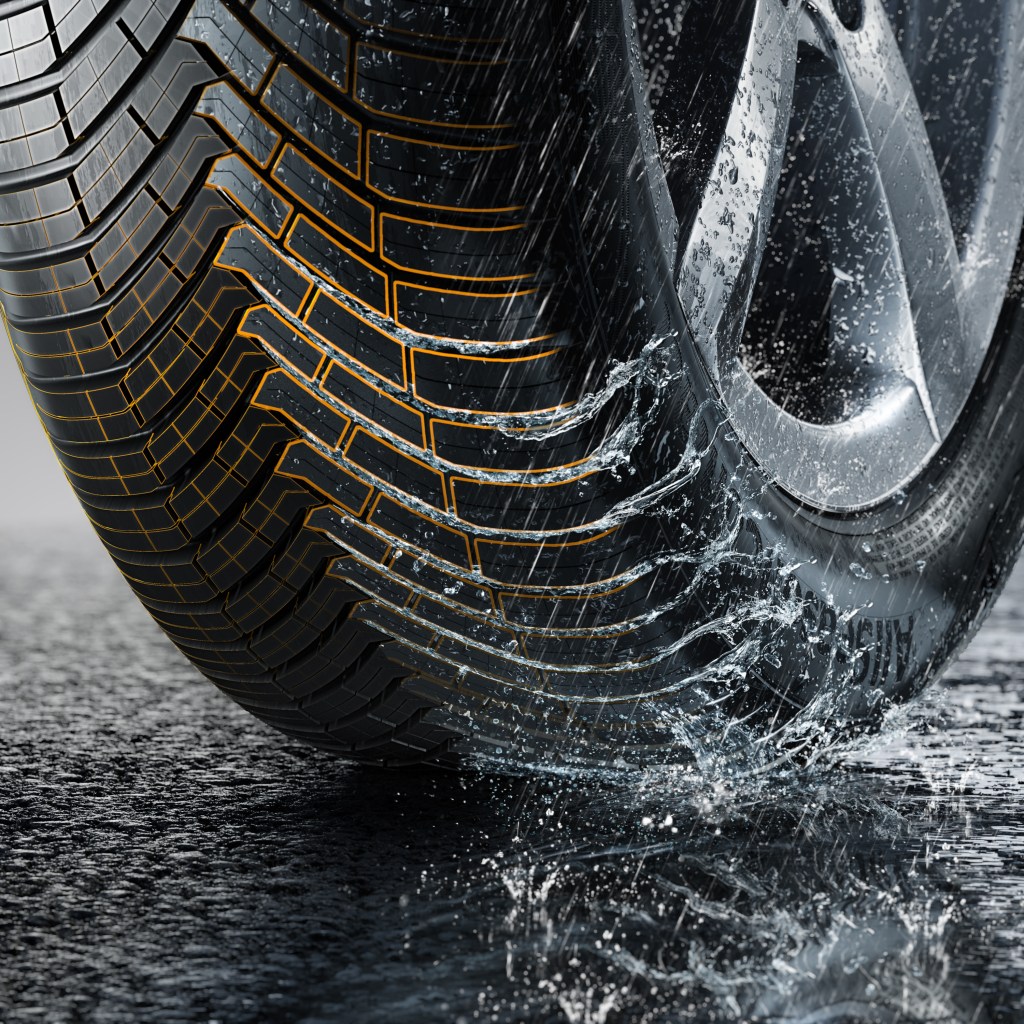
But if you look closely at the winter and all-season tyres, you can see more differences again. The winter tyres have many more tiny grooves, known as “sipes”, across the full width. Under pressure from the weight of the car, these open up and greatly improve traction on hard snow and ice.
The downside is that they generate noise, especially at higher speeds, and so you can see above that the all-season tyres use less siping than winter tyres.
Compound
Although most tyres look the same in terms of colour and feel, the chemical composition of different types of tyre is dramatically different. All-season and winter tyres are softer than summer and sport tyres, making them more flexible and able to grip slippery surfaces better.
The composition is also designed to cope much better with lower temperatures; whereas summer tyres get even harder when the mercury drops, winter tyres are designed to remain supple.
This negatively affects rolling resistance, though — the friction between the tyre and road surface — which means the engine has to work harder to keep the vehicle in motion, resulting in reduced fuel economy.
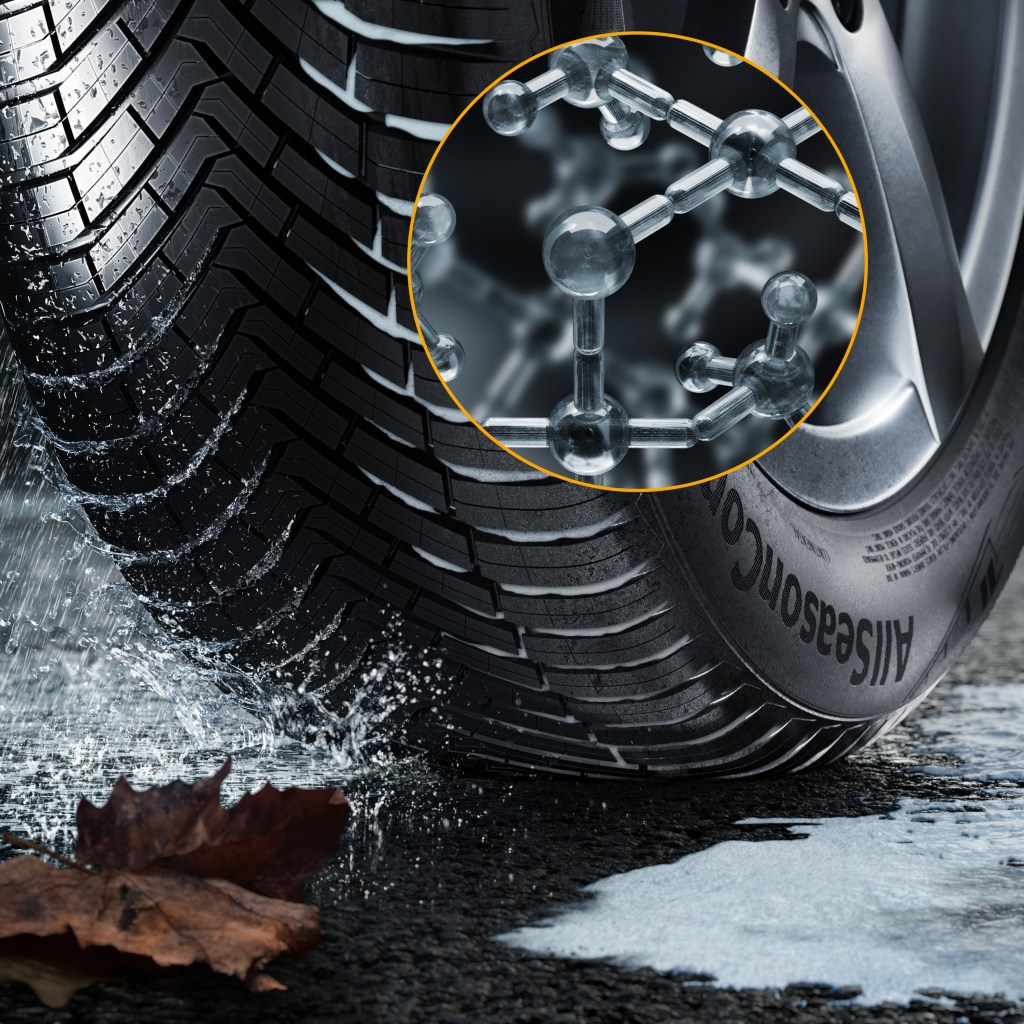
All-season tyres strike a balance between the two, and Continental claims its All-SeasonContact tyre, with its high silica composition, is particularly good for fuel economy versus the competition thanks to best-in-class rolling resistance.
Limitations of all-season tyres
There was a reason our tests were conducted in family hatchbacks and not the hot Mercedes-AMG models on offer at Mercedes Benz World: high performance cars require tyres capable of extremes of speed and cornering ability in the dry, and all-season tyres aren’t designed for that.
The ribs (lines of tread) of an all-season tyre are softer than those of a sports tyre, meaning they aren’t as good at coping with lateral (sideways) loads as well as a sports tyre, while the maximum recommended speed of the Continental All-Season tyre is 150mph – plan anything faster and you’ll need a different set of rubber.
Because of this you’ll also find that all-season tyres don’t often come in larger sizes, above around 18in, because generally high performance cars have larger wheels with lower-profile tyres.
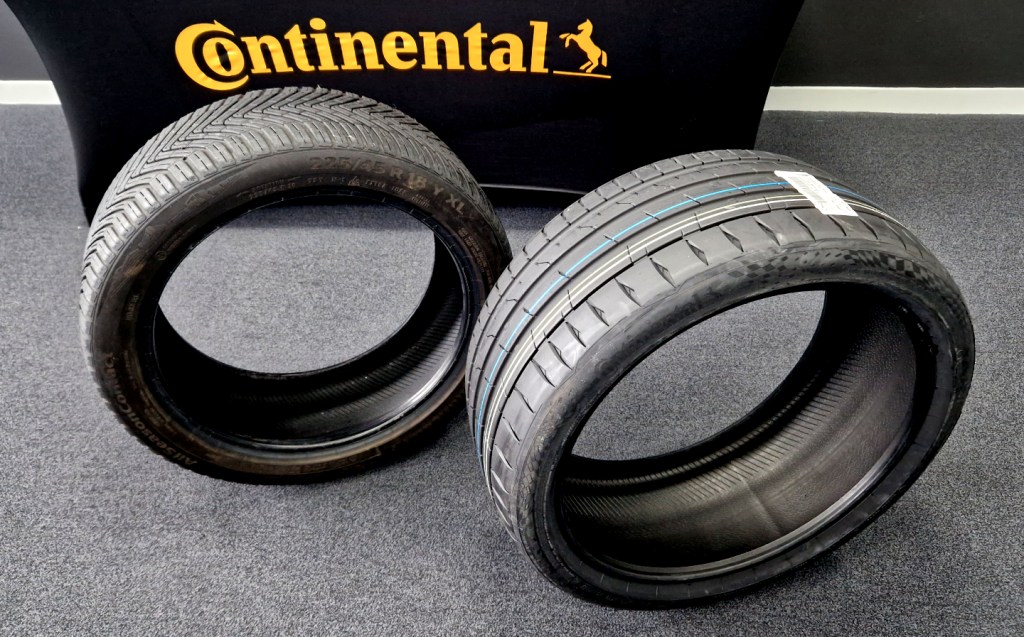
This is changing, as many electric cars now have huge alloys thanks to the extra torque afforded by electric motors, so a larger number of family cars can now come with wheels of 19in or more, meaning tyre companies are being forced to develop new, more advanced types of all-season products to suit.
You will also find that the tread pattern of all-season tyres increases cabin noise compared with summer tread patterns, and the softer compound increases rolling resistance thereby reducing fuel economy.
How Continental all-season tyres fared in our tests

Mercedes-Benz World laid on two almost identical A-class superminis for the test, both A 200s with front-wheel drive and the same 161bhp 1.4-litre four-cylinder turbocharged petrol engine under the bonnet. Critically, the wheels on both cars were 18 inches in diameter, with the same tyre size (255/45 R18), and the tyres pumped to the same pressure.
The only difference between the two cars (other than the paint colour) was the tyre itself: one was fitted with Continental AllSeasonContact tyres and the other shod with summer-focused Continental EcoContact 6 tyres. The idea was to show the difference, if any, between the two in wet, dry and snowy conditions.
The latter test can be achieved at Mercedes-Benz World all year round thanks to the use of a special resin coating on a strip of road surface and a series of water jets along its edges. “It’s not as slippery as black ice,” my instructor Phil told me. “In terms of its grip level it’s extremely close to packed snow.”
Phil set the speed limiter to 40mph and told me to accelerate to the maximum speed then slam the brakes on at a set of cones, letting the car’s ABS and electronic stability control systems do their thing. “That will ensure maximum consistency across the tests,” he assured me.
Acceleration in the dry felt consistent in both cars, with each A-Class hitting 40mph well before the braking point. Then, at the cones, I stood on the brake pedal as instructed. Even with and all-season tyre, this is a disconcerting sensation, as the car slides on well beyond the point at which your eyes tell you that you should be coming to a halt. It looks simply like wet road rather than a snowy road.
But as alarming as the stopping distance with the AllSeasonContact tyre was (and we ran it three times, with almost identical results), the same test with the EcoContacts was shocking. No-one could argue that these are bad tyres – in fact they’re some of the most sophisticated available from one of the market-leading premium manufacturers. But they’re designed for summer conditions and ultra-low rolling resistance (i.e. the best fuel economy), and on snow the difference between these and tyres designed for more challenging weather conditions proved stark.
Not only did the car sail past the spot at which we’d come to rest with the AllSeasons, but continued right to the end of the resin strip. They bit hard into the regular asphalt at the far end, and the slide finished abruptly.
When I looked in the mirrors, then over my shoulder, to try to spot the tuft of grass I’d been using to mark my runs with the AllSeasons, I found it was so far behind me I could barely see it. If this had been real snow, the difference could mean a fairly uncomfortable prang at best. On a mountain road, I dread to think.
Accelerating on the wet resin proved interesting, too. While both cars managed to pull away thanks to liberal use of the traction control, the biting point between tyre and road necessitated far less pressure on the accelerator with the EcoContacts, which means slower acceleration. If you need to get out of the way in a hurry, an all-season tyre is without doubt a massive advantage.
But what about twists and turns? What sort of difference do all-season tyres make during cornering? To find out, Phil directed me to Mercedes-Benz World’s skid pan – a circle of asphalt with grippy inner and out rings and a central ring painted with more slippery resin paint.
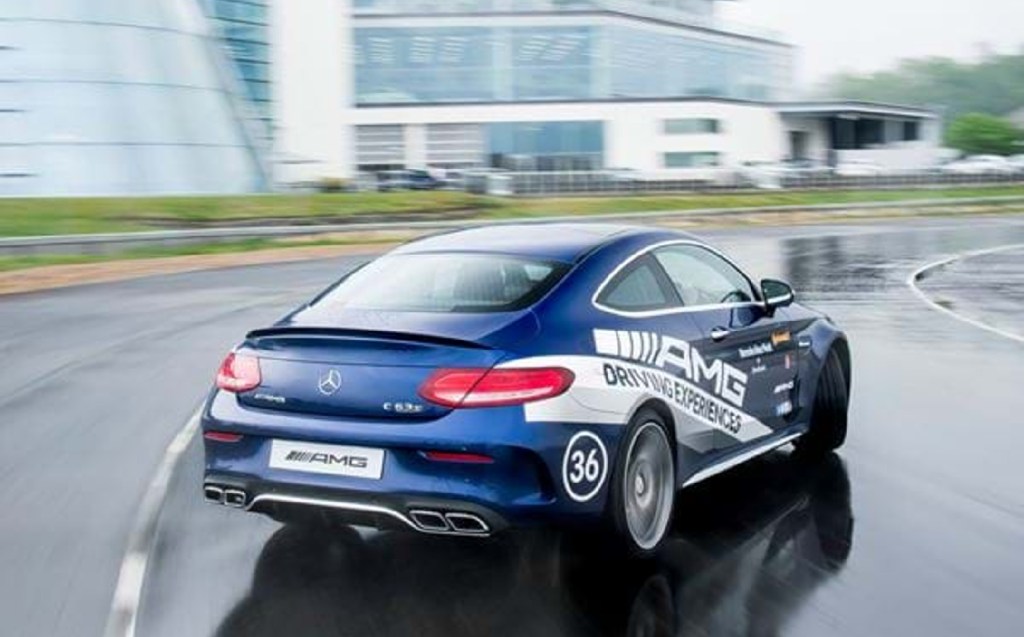
Normally, guests use this to learn how to drift a powerful rear-wheel-drive Mercedes-AMG (as above), but today we were finding out how fast we could drive around before the front wheels of the A-Classes lost grip and began to slide towards the outer boundary.
The answer again was clear. With the EcoContacts, a constant 21mph was just about doable but just 1mph above that and the A 200’s front tyres could no longer cope, and steering inputs failed to register – the only way to regain control was to ease off the throttle, drop back below 22mph and straighten the wheel a little (adding more lock simply encouraged the slide).
The car with the Continental AllSeasonContacts felt dramatically different. You still lose grip and the nose of the car wanders in the same way, but it happened at 26mph. That doesn’t sound like much but it’s a 24% increase in speed and when tip-toeing around on snow, it would make a big difference.
The noise from the tyres was noticeable, too: almost silent with the EcoContacts but squealy with the AllSeasons, and with noticeable vibrations through the steering wheel as the more suitable tyres work harder for grip. It’s less pleasant in terms of feel and noise but if it’s keeping your car on the road in tricky conditions, you’re not going to complain.
Verdict: should you buy all-season tyres?
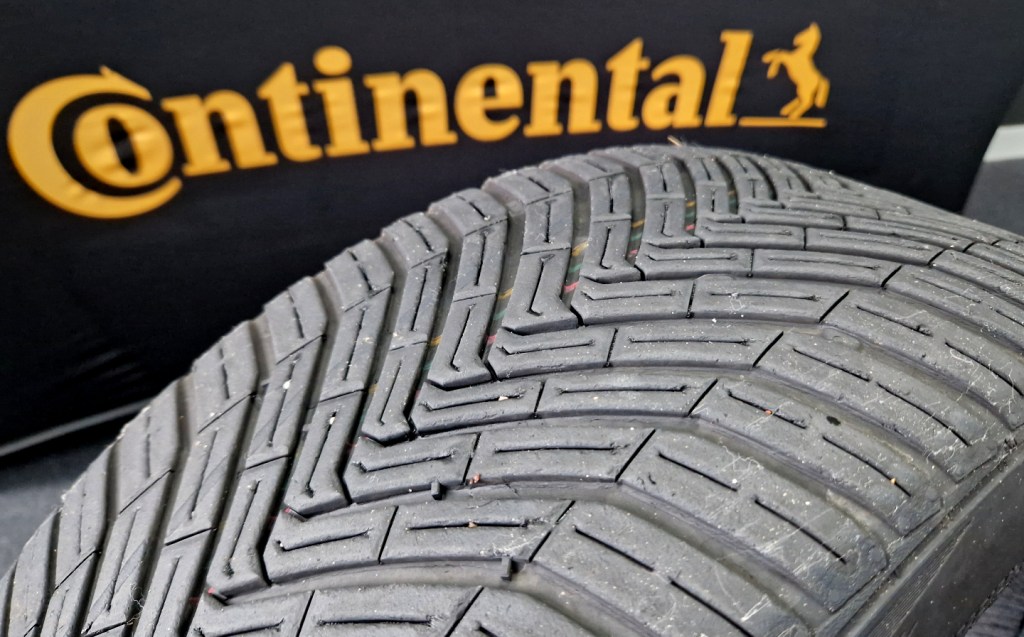
An all-season tyre is now an excellent option (surprise, surprise) for all-year round. This wasn’t always the case – like the Amphicar of the early 1960s, which was pitched as both a boat and a car but wasn’t very good at being either, all-season tyres tended not to be very good in the summer and not very good in the winter.
But our tests show that’s no longer the case — the tyre technology has got to a point where stopping and cornering in the dry and wet is almost identical, while on snow they offer a clear and reassuring improvement in grip over summer tyres. Well, that’s certainly true for the Continental AllSeasonContact.
Of course, a dedicated winter tyre would outperform the AllSeasons in both of these tests. But it wouldn’t perform anywhere near as well in dry conditions. What’s more, a winter tyre will wear quicker, generate more road noise and result in poorer fuel economy when used during the summer.
So if you live in a place where you get clear and prolonged extremes of weather – dry in the summer and guaranteed, sustained snow coverage in winter – having sets of dedicated summer and winter tyres make sense. But for most people in the UK, in locations where dry and wet conditions are common but snowfall is infrequent, an all-season tyre could be a sensible choice all year round.
Continental says its AllSeason is due to be replaced in 2023 by the more advanced AllSeason 2, so we can expect even greater things from all-season tyres in the future.
Three of the best all-season tyres to buy for your car
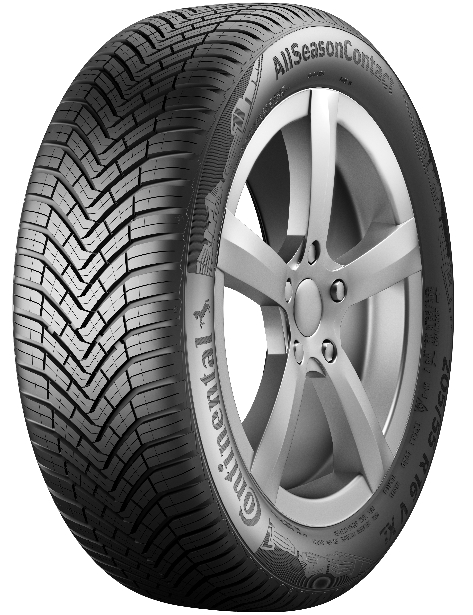
Continental AllSeasonContact
Highly rated by reviewers and has won Auto Express group tests multiple times. Its grip on snow was noted in particular, along with its excellent all-round abilities, though some others proved a touch better in deep water and dry conditions.
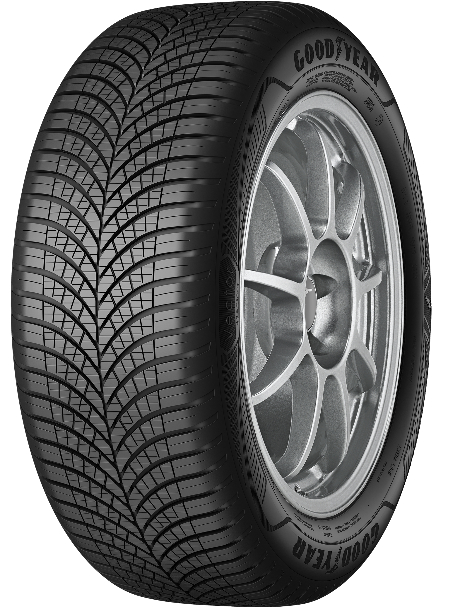
Goodyear Vector 4Season Gen-3
Another award-winning all-season tyre that’s particularly good in the wet, though not the best in dry conditions and according to Auto Express can’t quite match the Continental on snow.
Where to buy it: Halfords; KwikFit; Tyre Shopper UK
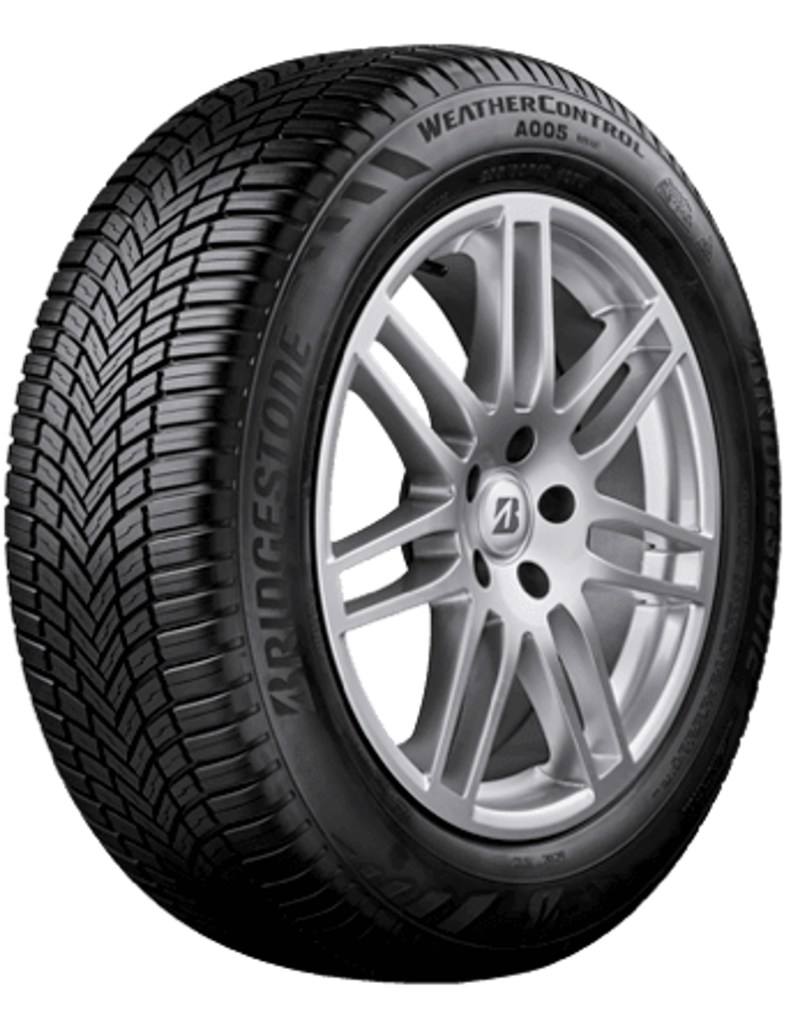
Bridgestone Weather Control A005 EVO
Considered another excellent all-season tyre, this is good in the dry and a class-leader in the wet, though deep water removes the advantages and it’s not the top model on snow, according to Auto Express. The EVO is designed for reduced wear compared with the regular A005.
N.b. We may receive a small commission fee if you click on a link to an external website and purchase a product as a result, but these links are designed to make your life easier and it does not affect our editorial independence.
Related articles
- If you were interested in the best all-season tyres and their benefits, you might like to read tyre insurance and whether you need it
- And here are seven of the best winter tyres and where to buy them
- You might also like to read about how to claim for pothole damage to your car’s suspension, wheels and tyres
Latest articles
- Omoda 5 prototype review: Bargain family SUV is solid first effort for new Chinese brand
- Dacia Duster 2024 review: Rugged, affordable SUV modernised with electrification and quite the glow up
- Audi A3 Sportback 2024 review: Softly, softly, catchy premium hatchback buyer
- New electric-only Mini Aceman fills gap between Mini Cooper hatch and Countryman SUV
- Tesla driver arrested on homicide charges after killing motorcyclist while using Autopilot
- Porsche Macan 2024 review: Sporty compact SUV goes electric, but is it still the class leader for handling?
- F1 2024 calendar and race reports: What time the next grand prix starts and what happened in the previous rounds
- Aston Martin DBX SUV gets the interior — and touchscreen — it always deserved
- Nissan unveils bold look for updated Qashqai, still made in UK


